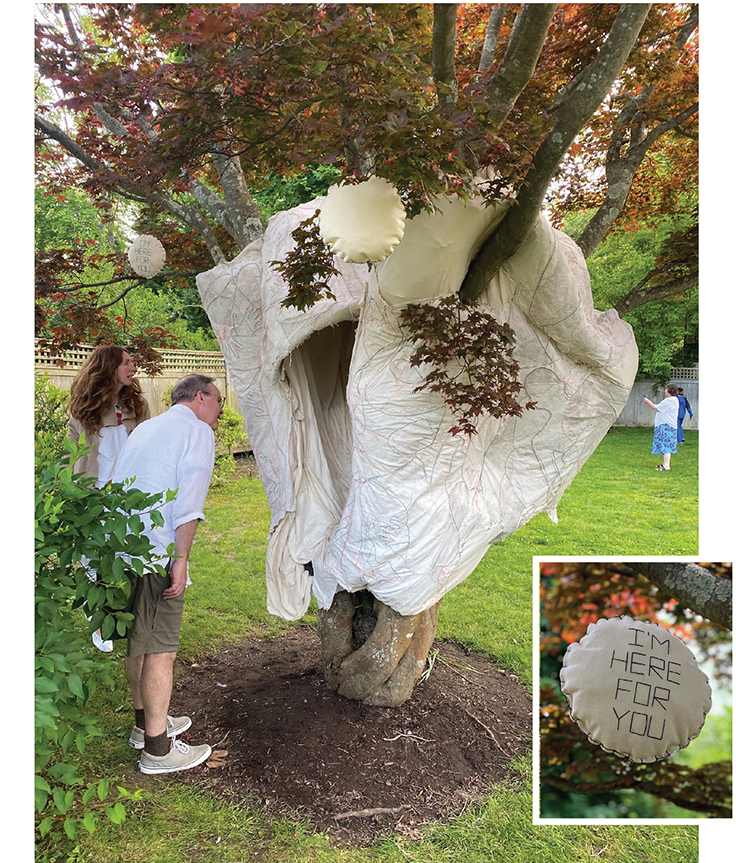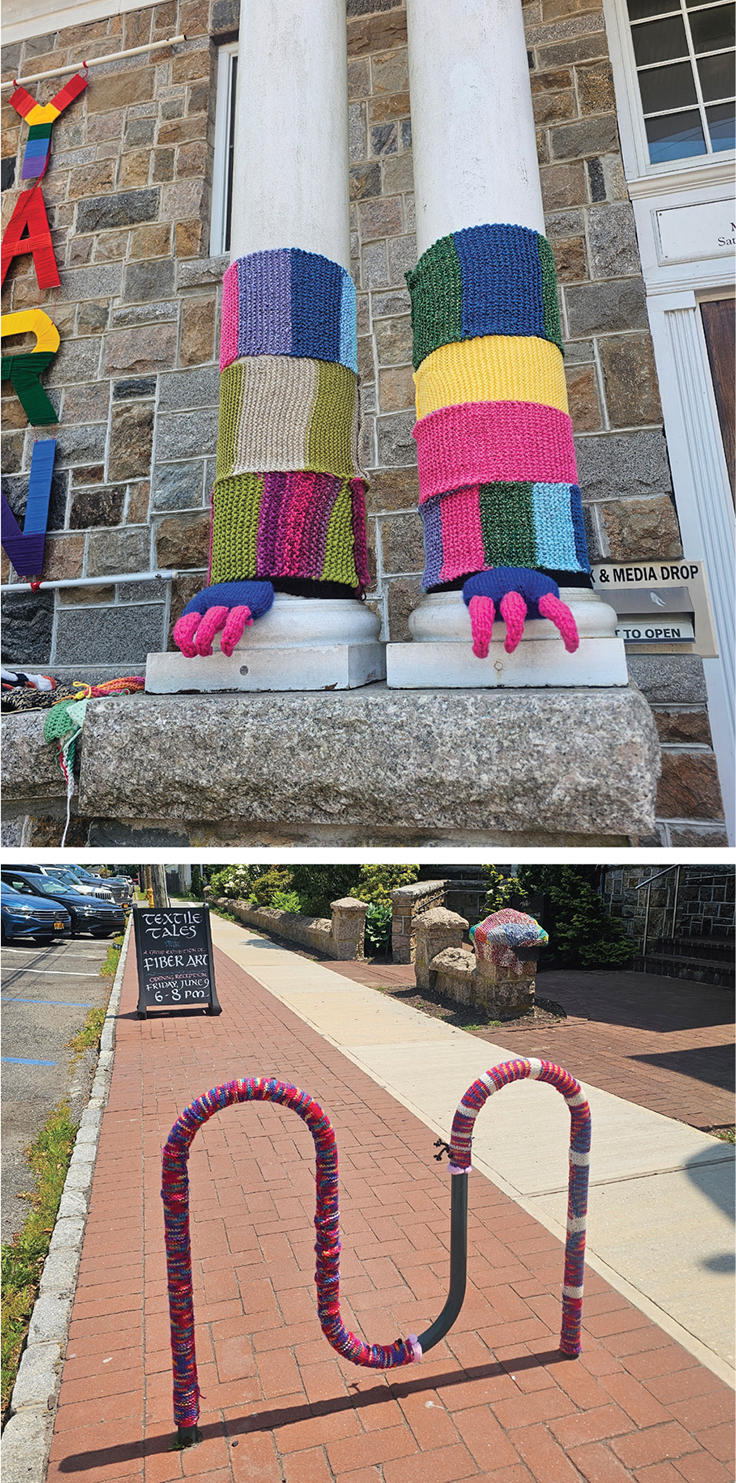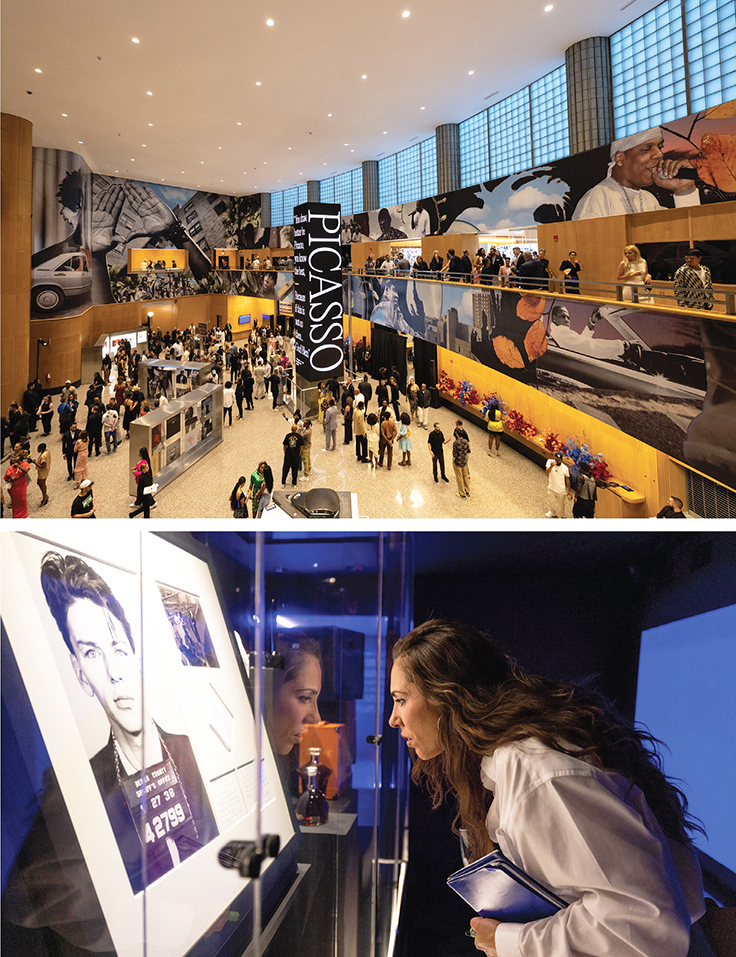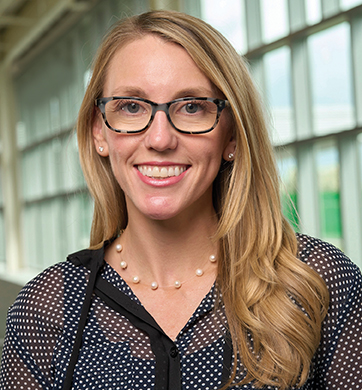Hungry for Connection: Addressing Loneliness Through the Library
When the Centers for Disease Control and Prevention (CDC) officially declared an end to the COVID-19 public health emergency in May 2023, many libraries reported a transition back to what felt like pre-pandemic days, with children joyfully attending story times and crowds reconvening to hear their favorite authors. Yet, just as we breathed a collective sigh of relief at the formal end of one emergency, United States Surgeon General Dr. Vivek Murthy issued a new advisory warning of a pernicious health risk: loneliness.
Library programs are part of a national strategy to combat a major public health epidemic: loneliness
When the Centers for Disease Control and Prevention (CDC) officially declared an end to the COVID-19 public health emergency in May 2023, many libraries reported a transition back to what felt like pre-pandemic days, with children joyfully attending story times and crowds reconvening to hear their favorite authors. Yet, just as we breathed a collective sigh of relief at the formal end of one emergency, United States Surgeon General Dr. Vivek Murthy issued a new advisory warning of a pernicious health risk: loneliness.
The latest research from the Cigna Group indicates that more than half (58 percent) of American adults are considered lonely—and those percentages jump among minoritized populations (75 percent of Hispanic adults; 68 percent of Black adults). People with lower incomes report higher levels of loneliness than those with higher incomes; and, while older adults are often considered the most affected by social isolation, it’s young adults (18–24) who are twice as likely to be lonely as seniors (55+).
This matters because loneliness is crippling physically and figuratively. It’s as deadly as smoking 15 cigarettes a day and more damaging than consuming six alcoholic drinks daily, according to the Surgeon General’s advisory. Researchers from the National Institutes of Health link loneliness to higher risks for anxiety, Alzheimer’s disease, cognitive decline, heart disease, high blood pressure, and obesity. But it’s not just the risks to individual health that make it so dangerous—loneliness is destructive at the community level, too. “When we are less invested in one another, we are more susceptible to polarization and less able to pull together to face the challenges that we cannot solve alone—from climate change and gun violence to economic inequality and future pandemics,” wrote Dr. Murthy in an April 2023 New York Times op-ed.
 |
BRINGING PEOPLE TOGETHER at libraries can take many different forms. Guests chat over a meal at Howard County Library System’s “The Longest Table” event on September 30, 2023. Photo by Doug Kapustin/Howard County Library System |
WHERE ARE ALL THE PEOPLE?
If library visit data give any indication of community connectedness, then this is a moment to sound an alarm. The latest data from the Institute of Museum and Library Services (IMLS) Public Library Survey, which lags by two years, reflects the limbo that was 2021—the world opened up for a “hot vax summer” and then retreated when faced with subsequent Delta and Omicron waves—leaving library visits 96 percent lower than 2019.
The Urban Libraries Council (ULC), endeavoring to provide a more current snapshot, surveyed its members in 2023 only to find a 44 percent decline in visits from 2019 to 2022. Anecdotal feedback signaled a more optimistic outlook for 2023, with respondents anticipating growth over 2022. Yet, as circulation and visit statistics show an upward trajectory from recent lows, the fact remains there are fewer people visiting libraries than before the pandemic.
Libraries have responded to this challenge by launching creative programs and events designed to increase foot traffic, while also acknowledging a growing intensity to their interactions with the public. Patrons grappling with issues ranging from mental health to addiction to chronic physical conditions, compounded by a diminished social safety net and increased reliance on social media, contribute to difficult, traumatic, and sometimes dangerous situations that front-line library workers face. These problems aren’t a result of the pandemic, but the behaviors observed in many libraries over the past 18 months might be tied, at least in part, to a complex public health issue: people are starved for connection.
LIBRARIES ARE PUBLIC HEALTH
According to the CDC, social isolation, which contributes to loneliness, is a lack of social connections, whereas loneliness is the feeling of being alone regardless of the amount of social interaction. Libraries possess the physical infrastructure and community relationships to tackle loneliness and social isolation—but they may not view their community engagement work through the lens of public health. According to the Public Library Association’s 2022 Public Library Services for Strong Communities report, when asked to list the areas where libraries are currently doing work or have plans to address their community’s most pressing needs and priorities, public health and well-being ranked 7 out of 10. But the many program options offered by libraries that are listed in the report—gaming for teens, book clubs, and family engagement events, for example—are activities that can build the very relationships our nation’s public health experts say we most need to cultivate.
Libraries provide a space where people can build what sociologists and psychologists call “weak ties,” or casual connections and loose relationships with people such as neighbors, classmates, or even near-strangers. Although they lack the intimacy and frequency of “strong ties”—the relationships we have with our family or closest friends—these social connections help shape a feeling of belonging that one needs to combat feelings of loneliness. In fact, they are an essential part of individual well-being.
 |
HERE FOR EVERYONE “present,” a garden installation by fiber artist Larissa Killough at Greenport, NY’s Floyd Memorial Library, invites visitors to pause and reflect while delivering messages of support and care (inset). Photos by Larissa Killough |
BREAKING BREAD BUILDS A BOND
As libraries practice different ways of bringing people together, many have started to use food as a convener. The body of research coming out of the Big Lunch initiative in the UK, which is focused on building more connected communities to reduce social isolation, reinforces the benefits of communal eating, demonstrating that eating together can provide social and individual benefits that include feelings of happiness, greater satisfaction with life, and greater engagement with participants’ local community.
In 2017, Howard County Library System (HCLS), MD, launched “The Longest Table,” a communal eating event inspired by the Village Square program out of Tallahassee, FL. In partnership with Howard Community College, HCLS’s The Longest Table invites residents to come together over a meal and get to know people from their community that they might not otherwise meet. “The simple act of breaking bread with people generates conversations,” says Christie Lassen, HCLS director of communications.
The program itself is simple—anyone high school age and up can register, and they are randomly assigned a seat. Tickets are $15 per guest, but sponsors help cover the cost for individuals who cannot afford a ticket and wish to attend. Each table has a host who helps facilitate conversation, which is sparked by a series of questions.
When the pandemic threatened to shut down the 2020 event, residents asked for a virtual option as a way of addressing the social isolation many faced. In 2023, 200 guests at The Longest Table joined together in person to discuss personal strengths and community assets. “We asked people to share one thing they’re good at and something they want to learn,” explains Lassen. Guests answered questions such as “What’s the most important life lesson you’ve learned?” and “How do you wish we could grow and progress as a community?”
The positive response to The Longest Table helped elevate HCLS’s focus on nurturing community connections, which is part of its new strategic plan. “People enjoy The Longest Table so much that they ask us to hold the event monthly instead of annually. They are literally hungry for connection,” says Lassen.
 |
TRUE COLORS Colorful knits and playful patterns created by community members and artists during its “Yarnstorming” event adorn Floyd Memorial Library. Photos courtesy of Floyd Memorial Library |
CREATIVE EXPRESSION LEADS TO COMMUNITY CONNECTION
In 2002, Dr. Jeremy Nobel attended an art show that changed the trajectory of his research. The exhibit marked the first anniversary of 9/11 by showcasing art made by New York City schoolchildren reflecting on their experience of the terror attack. The power of their work inspired Nobel to explore how creative expression could be used to reduce risk for physical and mental illness—which led him to research the role of creativity and art as a public health intervention. In his book, Project UnLonely, Nobel describes how sharing in creative expression can generate the physiological and psychological conditions that weaken the grip loneliness can have on an individual.
Creative expression was central to a 2023 summer art event at Floyd Memorial Library, Greenport, NY, which invited community members to get involved. For many years the library has maintained an art curator on staff to contribute to programming and design local exhibits. Last spring, the library launched a collaborative “Yarnstorming” event, wherein anyone who wished to participate could make a piece that was woven into a public art installation. Together with local artists and an area nonprofit, the library requested donations of yarn and other supplies for makers to use in developing pieces that would festively adorn the library. Residents attended guided sessions at the library, where expert knitters and crocheters shared their skills with novices, who, in turn, got to learn something new.
The yarnstorm project leveraged the aspects of creative expression that Nobel identifies as key to addressing loneliness—being present in the act of making art, opening the imagination, and sharing the resulting work—all through a collaborative process. From seniors to students, the community created colorful knits that became part of an art installation and shared experience. “I think the one thing people liked most about Yarnstorming was that it was a community effort—it was designed that way. We saw that people do want to be together,” says Ellen Nasto, Floyd Memorial Library director.
At the exhibit opening in June 2023, residents and tourists alike stopped by the library to view the colorful display; neighbors bumped into one another while children ran through the library’s garden, where textiles hanging from tree branches conveyed a resonant message: “I am here for you.”
THE LONELY GEN Z WORKFORCE
Among members of Gen Z aged 18–24, the first generation that’s younger than Google, nearly 8 in 10 report feeling lonely. And, despite recent research from the American Library Association (ALA) finding that Gen Z and millennials use libraries at higher rates compared to older generations, many libraries struggle to engage young adults in meaningful and consistent ways.
San Diego Public Library (SDPL) sought to forge relationships with teens and young adults in its City Heights community while also supporting workforce skill development when it launched a new digital media workforce program. In partnership with Media Arts Center San Diego, the library hosts a quarterly six-week training program where participants develop skills in filmmaking, marketing, social media, and other aspects of the creative economy. Following that training, participants enter a 12-month paid internship with the library and the City of San Diego. Interns are tasked with creating videos and social media content to help tell the library story, expanding its reach and better connecting the broader San Diego community with library programs and services.
The library selects its interns from the local community, using equity-based metrics to ensure low-income residents, those involved in the foster or justice system, and those residing in communities of concern—demographics that experience higher rates of loneliness—have an opportunity to participate. The program is now in its fifth cohort; 70 percent of its interns come from minoritized populations.
The attention to a workforce cohort is particularly relevant in the context of loneliness, as lonely employees are more than twice as likely to miss a day of work due to illness and more than five times as likely to miss work due to stress. For the library, the intern cohorts create a small community within which they have a shared experience of learning. According to Misty Jones, SDPL director, “In this last round we had 130 applications—more people applying for the program than we have spots to fill. These are often people who say they hadn’t previously come to the library, and now they are learning what we have to offer and helping to tell our story.”
WHAT COMES NEXT
Loneliness isn’t just about isolation—it’s a feeling of being alone or disconnected even in a world where technology enables instant contact. Fewer people visiting libraries can be viewed as a symptom of a lonelier nation, but it’s also one part of the cause.
Working to grow library visits will be key to addressing our nation’s loneliness problem; how libraries choose to do that will depend upon the unique interests and needs of their community. The Surgeon General’s advisory lays out explicit actions for community-based organizations to take in this effort, including advancing public education on the importance of social connection, providing programs and services that engage the community, and fostering a culture of connection by modeling and highlighting healthy social engagement.
Positioning libraries as part of the public health ecosystem can provide a renewed sense of purpose for those working in the field while also reinforcing the indispensable role libraries play in modern American life.
Brooklyn Public Library Brings Community Together with “Book of HOV”
Sometimes bringing people together requires unusual partnerships—a lesson that Brooklyn Public Library (BPL), NY, learned in 2023.
On a crisp, sunny September morning, about a dozen people waited in front of BPL Central Library in the minutes before opening—a rather small gathering given the long lines seen in the first few weeks of BPL’s Book of HOV exhibit, produced by Roc Nation. A man paced around the library entrance, approaching the security guard to inquire if it was time yet for the library to open. One woman sat at an outdoor table, hand on a cart filled with files and belongings, while others stood, backpacks slung over shoulders, scrolling on their phones. A couple snapped photos in front of a massive LED cube flashing video snippets of Brooklyn’s own Shawn “Jay-Z” Carter, the subject of the library’s special exhibit.
At exactly 9:00 A.M. the library doors opened, and the crowd entered the building. Some paused to orient themselves and find a section of the exhibit to explore; others beelined to areas where they could do their regular library business. In this mix of library users and exhibit viewers, the library came alive. One visitor from Queens, NY, remarked about the exhibit, “for this to be at a public library, it surpasses expectations.”
 |
THE BOOK OF HOV’s popularity drew record crowds and saw BPL issuing an average of two new library cards per minute in its opening weekend. Photos by Gregg Richards/Brooklyn Public Library |
The exhibit drove record attendance numbers for BPL in the second half of 2023. More than 600,000 visitors came to Central Library in the five months the exhibit ran, marking a 74 percent increase in foot traffic. Thirteen limited edition Jay-Z library cards also spiked card signups, accounting for nearly 40,000 new cardholders.
BPL’s Chief Librarian Nick Higgins acknowledges the unique opportunity the Book of HOV created—how many other libraries have the opportunity to host an exhibit about a world-famous artist? The trick for BPL, he notes, will be maintaining the goodwill that the exhibit generates. So far, it seems to be on the right track—20 percent of new cardholders have already used their library cards, indicating an interest in continuing engagement.
The success of the Book of HOV offers a scalable takeaway that libraries everywhere can emulate: Find something that is highly interesting to your community and celebrate it. Did your local high school basketball team make it to the state championships? Organize a display of team jerseys over the decades or a program with the newspaper’s sports columnist and team coach. Host a book buzz event with local social media influencers. Find a group or topic that captures the attention and energy of the community, and partner up to bring people together in the library.

RELATED
ALREADY A SUBSCRIBER? LOG IN
We are currently offering this content for free. Sign up now to activate your personal profile, where you can save articles for future viewing









Add Comment :-
Comment Policy:
Comment should not be empty !!!